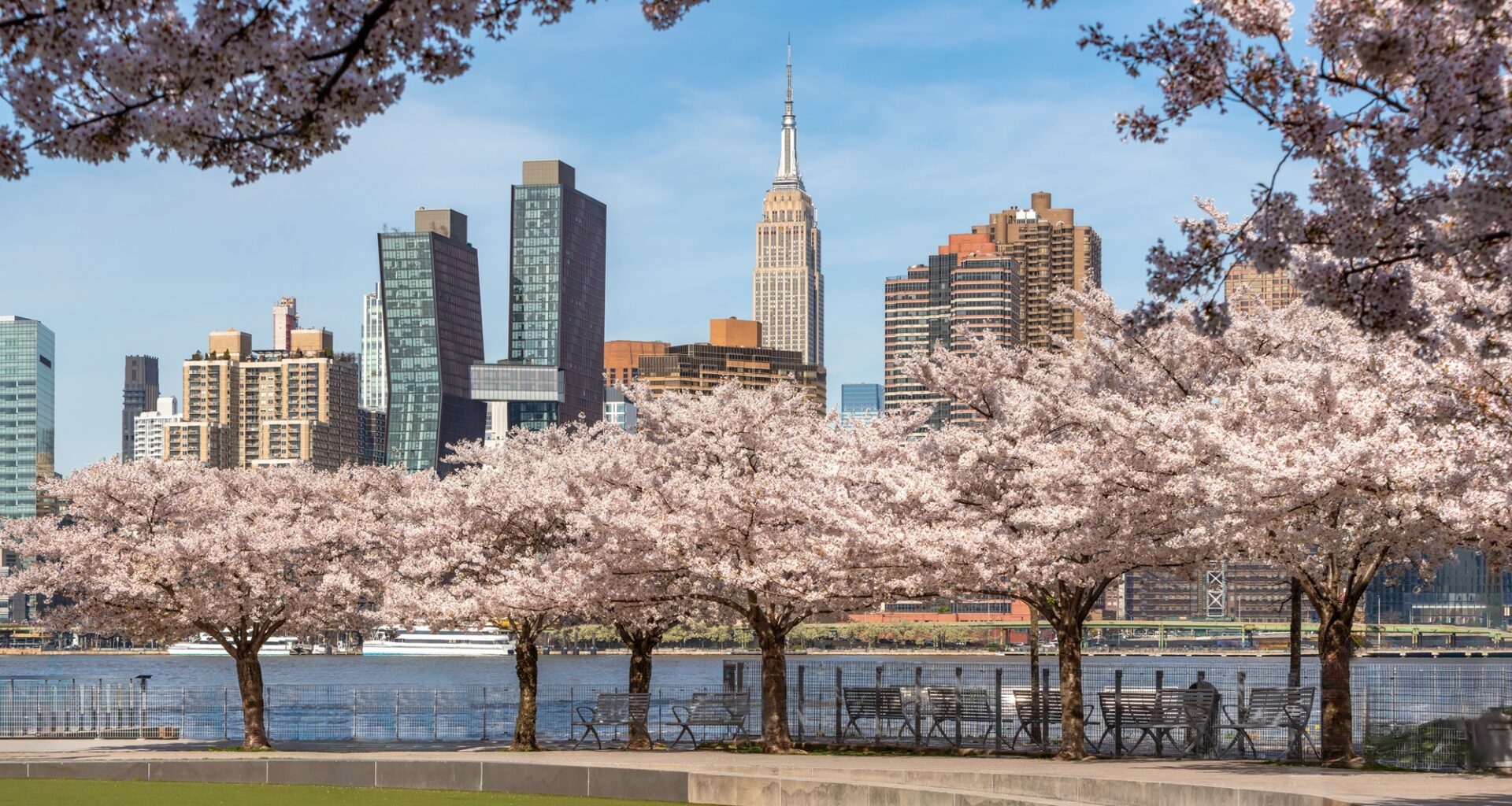If you thought climate change meant spring would keep sneaking in earlier each year—surprise! A new Yale study says New Yorkers will be cooling their heels for cherry blossoms, lilacs and all those leafy Instagram backdrops. Turns out, the city’s trees are hitting the snooze button.
The culprit is warmer winters that mess with the trees’ internal clocks. Trees in temperate regions, including those in New York City, need a proper cold spell to reset for spring. Without that chill, they don’t know when to wake up. So instead of bursting into bloom, they stall—resulting in delayed leaf-outs, shorter green seasons and less shade when we need it most.
Researchers analyzed more than two decades of NASA satellite images from 346 city parks. They defined spring’s start as when at least 15% of the trees in a park leafed out. The results flipped expectations: Spring is actually coming later, not earlier and the effect is most pronounced in medium-sized parks like Bryant Park and City Hall Park. These spaces—too big to fully blend into the urban grid, too small to buffer against it—are caught in a heat trap. On average, their spring debut is three to five days late.
Large parks like Central Park and Prospect Park are only two days late, while tiny pocket parks under two acres take about a day longer. But in a city where every day of shade and oxygen counts, even small delays ripple outward.
“It’s going to be really disruptive for a lot of wildlife that depend on these trees for food, for shelter,” Novem Auyeung of NYC Parks told Gothamist. Humans lose out, too, with less shade, hotter streets and fewer leafy canopies to soften the city’s concrete edges.
Over the past 50 years, NYC winters have warmed by more than three degrees Fahrenheit. That means less photosynthesis, weaker growth and native trees like oaks and maples losing ground to hardier invaders like the notorious Tree of Heaven. Park managers are already battling abnormal branching, earlier leaf drops and outbreaks of disease.
Solutions include more trees, denser canopies, green roofs and heat-taming building materials. Otherwise, your spring picnic might look a lot more skeletal.
After all, “it’s more pleasant to walk underneath trees that are lush and green than it is to walk under these kinds of skeletal structures,” Jeffrey Clark, of the Natural Areas Conservancy, said to Gothamist.
Translation: We hope you enjoyed those blossoms while you can—next year, they’ll be fashionably late.
